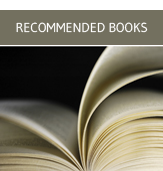In Case You Missed It Part 7: Selected Acquisitions
It has been a long time—too long—since we have compiled an In Case You Missed It list of acquisitions. We present here a wide range of books here that even devoted book review readers might have missed. This, the seventh installment, contains mostly books received and processed during the beginning of the year until just before we shut down in March. We will be back soon with another list of books that have been processed since we reopened the building in June. As always, this is a highly subjective selection, quite simply books that caught our eye while reading reviews or looking at publisher’s announcements. We hope you find something for your reading list.
Looking for more to read? Check the six previous In Case You Missed It installments here. And there is no substitute for checking our monthly new books lists (current / previous).
Jump to: Biographies & Memoirs | Fiction | Literature, Language, Essays, Books | History | Fine & Performing Arts | Science | Travel & Exploration
BIOGRAPHIES & MEMOIRS
All My Cats | Bohumil Hrabal 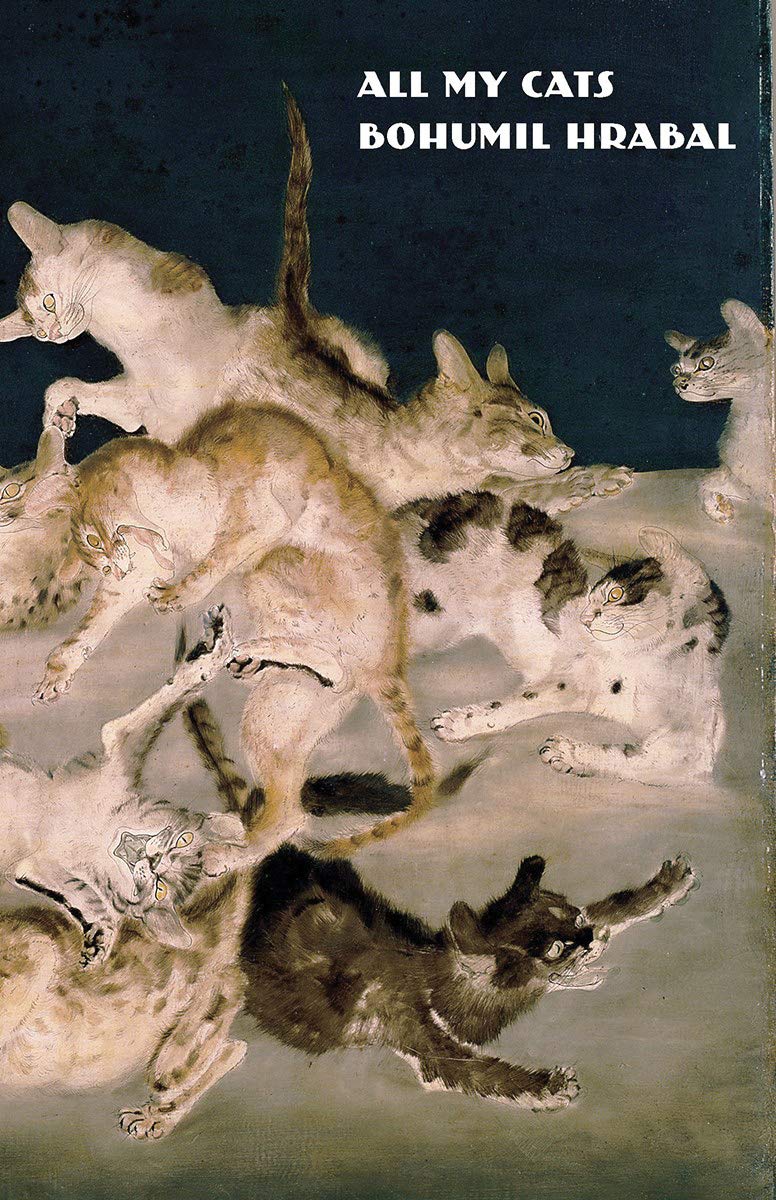
Bohumil Hrabal (1914-1997) was an acclaimed, prolific novelist, and called “one of the great prose stylists of the twentieth century." This memoir, originally published in 1983, is "an affecting meditation on the joys and occasional griefs of sharing his life with a large group of cats" that have overrun his weekend country cottage and threaten to overwhelm his life. Lucy Scholes in the Paris Review writes that "although All My Cats starts out as an enchanting account of a cat lover’s feline-filled existence, the book soon transmogrifies into something much darker, becoming a meditation on love, loss, genocide, and guilt."
Frank Ramsey: A Sheer Excess of Powers | Cheryl Misak
The extraordinary life of a polymath/prodigy in the Bloomsbury set, who died in 1930 at age 26. As a philosopher, mathematician, economist, and more, Frank Ramsey's opinions were said to have had a "peculiar and decisive authority" among the intelligentsia of 1920s England. Writing in the Wall Street Journal, Richard Davenport-Hines raves: "Though his name is remembered only by specialists, Cheryl Misak persuades us, in Frank Ramsey: A Sheer Excess of Powers, that it should be coupled with those of other Cambridge men, such as Isaac Newton, Charles Darwin and John Maynard Keynes... Ms. Misak explains tricky intellectual abstractions with a clarity that is exceptional... This is an enthralling and glorious book."
The Planter of Modern Life | Stephen Heyman
If asked to guess which member of the Lost Generation the New York Times referred to as “most promising of all the young American authors writing today,” most people would guess FItzgerald or Hemmingway. It’s near impossible to imagine that anyone would guess Louis Bromfield, the right answer, who is mostly forgotten today despite winning the 1927 Pulitzer Prize for his novel Early Autumn. The fame his early career brought him was eclipsed by his later work as a farmer and conservationist, where he presciently decried the use of pesticides and advocated for organic methods decades before Rachel Carson published The Silent Spring. Heyman’s biography chronicles both these periods of Bromfield’s celebrity-studded life (Bogart and Bacall married on his farm!) in what the Wall Street Journal calls a “rollicking good yarn.”
FICTION (Neglected and Rediscovered)
Born Losers | Barbara Skelton
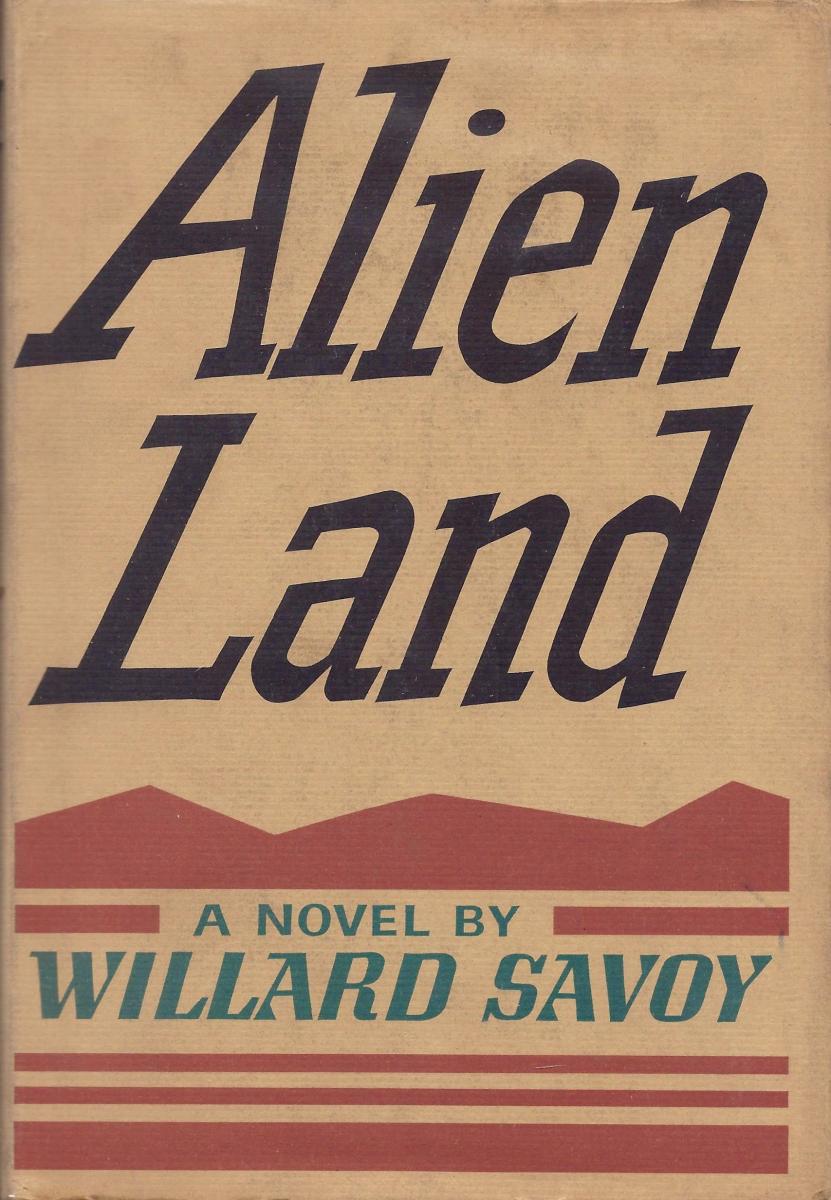
A few years ago, DJ Taylor wrote in The Guardian that "Barbara Skelton’s trail runs through a certain type of 20th-century literary life like a vein of quartz." Evelyn Waugh and Nancy Mitford gossiped about her in letters, Anthony Powell used her as a model for Pamela Flitton in Dance to the Music of Time, and Cyril Connolly was her husband (they married in 1950). Femme fatale, bohemian, socialite, scene-maker, Skelton was also a talented writer of fiction and memoirs. In 1959, Skelton left London for New York, where she worked various jobs, had affairs (Kenneth Tynan and Charles Addams among them), and wrote the series of autobiographical short stories that comprise Born Losers (1965). The stories chronicle the social and working lives of young women living in New York, and are funny and sharp, with a wonderful appreciation of the absurd. They seem ripe for rediscovery—perhaps for fans of Elaine Dundy and Eve Babitz.
Diary of a Lonely Girl, or The Battle Against Free Love | Miriam Karpilove
A republication of an obscure novel portraying Jewish immigrant life in New York at the beginning of the 20th century. Originally published in 1918 in Yiddish newspapers as a serial, Diary of a Lonely Girl is a first person novel that takes a critical, darkly humorous look at radical leftist immigrant youth culture in early twentieth-century New York City. The observations are through the eyes of a young woman who is simultaneously of the culture and an outsider. Karpilove was a popular Yiddish writer in her day.
There is Confusion | Jessie Redmon Fauset
Jessie Redmon Fauset was the literary editor of The Crisis, the official magazine of the N.A.A.C.P., and played a prominent role in the careers of several Harlem Renaissance writers. (Langston Hughes wrote that she was one of “the three people who midwifed the so-called New Negro literature into being.”) An important, early work of the Harlem Renaissance, and published to critical acclaim in 1924, There is Confusion tells the story of three striving young African American friends in New York as they grow up and struggle with prejudice and discrimination and the changes in their friendship. This New Yorker article examines Fauset’s career.
Alien Land | Willard W. Savoy
Published in 1949 to much acclaim, Alien Land is Willard Savoy’s only novel. Its protagonist is a light-skinned African-American man who can pass as white in mid-twentieth-century America. Caught between black and white worlds in a segregated society, he experiences racism from both sides, and searches for reconciliation with his heritage and with his father. Ann Petry (author of The Street), reviewed Alien Land for The Saturday Review in 1949: “....written with passion and with anger, so that it has a vitality which makes it linger in the mind. Reduced to its simplest terms it is the story of a man’s loss of the sense of personal dignity, a loss that began in his childhood, continued through his adolescence, and into manhood; and of how he struggled to regain it." The New York Times reviewer wrote that “…the hate that flames on both sides of his grimly drawn color-line is both real and terrifying.”
A Double Life | Karolina Pavlova (translated from the Russian by Barbara Heldt)
Karolina Pavlova, born in 1807, was the leader of a respected Moscow literary salon, and very devoted to her own writing. In 1848, she published this, her only novel, which “shook the Russian literary world” (The Atlantic). The book’s unusual, groundbreaking structure alternates prose and poetry to offer a picture of Russian aristocratic society and dreams of escaping its strictures. The narrative prose details society life with its balls, tea parties, and horseback rides, and the poetic interludes depict the inner world of Cecily, the novel’s protagonist. Forced into the workings of an arranged marriage, this rendering of Cecily’s predicament speaks against the limitations placed on women and especially women writers in 19th-century Russia. The Atlantic notes that “the book is remarkable for its insights about the workings of internalized oppression” and that after the novel had faded into obscurity in the early 1900s, “the new Russian avant-garde rediscovered her work, and she became a mascot for its own literary explorations of thought and consciousness.” Pavlova and her novel are an interesting story. Read about in the Paris Review and The Atlantic.
LITERATURE, LANGUAGE, ESSAYS, BOOKS
Lectures on Dostoevsky | Joseph Frank 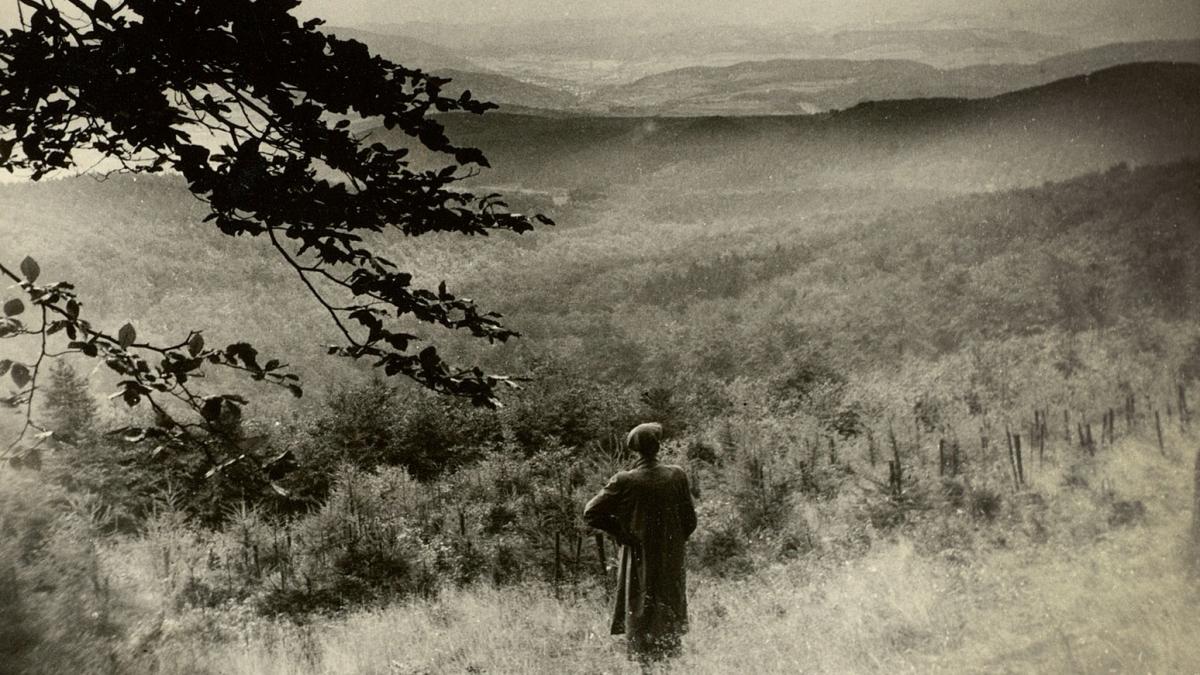
Joseph Frank's 5-volume biography of Dostoevsky is considered the definitive work on the writer's life. (If you don't want to commit to all five volumes, we also have the 956 page abridgement, Dostoevsky: a Writer in his Time.) Lectures on Dostoevsky was published posthumously, and contains Frank's Stanford lectures on the writer, offering an authoritative, accessible (the word "informal" comes up in the blurbs) introduction to the Russian master's life and work.
Shelter for Bells: Selected Writings | Hans Jurgen von der Wense
A Shelter for Bells is a collection of writings by Hans Jürgen von der Wense (1894-1966)—"composer, translator, folklorist, wanderer, aphorist, poet, and consummate mystagogue of the landscape," as the foreword describes this outsider of German literature. This is the first translation of his work, masterfully compiled and carefully sequenced from over 30,000 (!) pages of writing that Wense left behind when he died in almost-total obscurity. The writings—on landscape and nature, walking (Wense rambled 10-12 hours a day), weather, the cosmos, writing and art, and more—are mostly aphoristic and fragmentary, but the sequence of entries has a cumulative effect. The writing is ecstatic, immersive, and sometimes playful. The design of the book lives up to its contents.
You Talkin' to Me? The Unruly History of New York English | E.J. White
E. J. White teaches the history of the English language at Stony Brook University. The whole of New York English—the peculiar pronunciations, the interruptions, the slang, the profanity—is examined in this scholarly, prodigiously researched and footnoted, but also accessible and fun, book on the historical sociolinguistics of New York speech. The book is full of surprises, particularly when it examines the native New York accent, how it relates to the history of class and assimilation, and its relationship to the way those that live in the rest of the country tawk...er, talk. The Literary Review calls it "entertaining, engrossing, and funny." Not to be missed.
On Shirley Hazzard | Michelle De Kretser 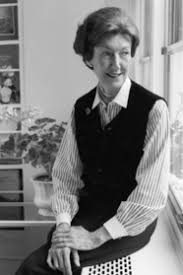
Shirley Hazzard (1931-2016) was a long-time trustee of the Society Library and a frequent visitor. Her fiction is perennially popular at the Library, and this compact, enthusiastic, personal appreciation of Shirley Hazzard’s work is sure to be appreciated by her many admirers. Eschewing plot summaries and biographical information, de Kretser focuses on a close, careful reading of Hazzard’s prose style. Look for a collection of Hazzard’s short fiction—including two previously unpublished stories—to be published in November.
The Ferrante Letters | Sarah Chihaya
Subtitled “An Experiment in Collective Criticism,” The Ferrante Letters is indeed an unusual, epistolary approach to critiquing literature. The book’s four authors—Sarah Chihaya, Merve Emre, Katherine Hill, and Jill Richards—are professors at Princeton, Oxford, Adelphi, and Yale. (Katherine Hill is also a well-known novelist, including The Violet Hour and A Short Move.) In 2015, they exchanged letters about Elena Ferrante’s The Neapolitan Quartet, developing and exchanging ideas about characters, themes, and style. The resulting book collects their correspondence along with one essay by each professor. Booklist notes that “alongside ideas, so too do intimacies develop—salutations evolve from ‘Dear Readers’ to ‘Dear Friends’—as the four allow their personal lives to flow into their correspondence...With fiery insight and feminist spirit, they have written a fitting companion to Ferrante’s books.” The Ferrante Letters has been praised widely: “sharp and lively” (Kirkus); “heartily recommended to fellow Ferrante fans, to feminist scholars, to readers interested in collective critical experiments, and to anyone who misses being part of a book club during a lockdown” (TLS); “the combination of intellectual rigor and personal reaction makes this fascinating reading for Ferrante fans” (Publisher’s Weekly); “the intimate tone lends a beguiling humanity to the book, inducing a pleasure more often associated with novels: the pleasure of character” (The New Yorker). The book now sits on stack 9--grab it while you wait in the queue for The Lying Life of Adults.
Criminal Child: Selected Essays | Jean Genet
This is the first English translation of the title piece, and it has an interesting backstory. In 1949 (the year Thief’s Journal was published), during a national movement to change the French reform school system, Genet was asked to write about his experience as a juvenile delinquent. Instead of delivering an exposé describing the horrors of these institutions, however, Genet wrote a paean to prison, and bitterly denounced any improvement in the condition of young prisoners as a threat to their criminal souls. (One has to wonder exactly why the would-be publishers were expecting something different.) Topics covered in the additional essays include Giacometti, Cocteau, Leonor Fini, and more. Published in the great New York Review Classics series.
Virginia Woolf: And the Women Who Shaped Her World | Gillian Gill
Gillian Gill adds to our understanding of Virginia Woolf by investigating the female exemplars in her life . With lives of unusual independence and creativity, Woolf’s forebears paved the way for her experimentation. And lest you think this is a prim academic study, Gill plumbs Woolf’s extensive correspondence for plenty of gossipy bits. “In this vibrant biography, Woolf emerges not only as a formidable writer and feminist but as a reluctant player in a long-running family soap opera, replete with dysfunctional Victorian patriarchs, martyred mothers, insanity, and a great many extramarital affairs” proclaims The New Yorker.
The Toni Morrison Book Club | Juda Bennett, Winnifred Brown-Glaude, Cassandra Jackson, and Piper Kendrix Williams
In 2015, four literature professors decided to form a book club to discuss Toni Morrison’s novels in an informal way. These get-togethers led to this book, where this diverse group bring their professional and personal insights to bear on four of Morrison’s most memorable novels. Booklist says, “The authors share experiences that have shaped the way they see the world, with writing that's crisp and direct and with a level of vulnerability that is not only commendable but heartwarming...This book is an intimate view into the audience Morrison wrote for, as well as the hopeful future she wrote towards. It is a beautiful homage to Morrison's legacy, and a light on all the work there is left to do."
Five Hundred Years of Women's Work: The Lisa Unger Baskin Collection | Naomi L. Nelson, Lauren Reno, Lisa Unger Baskin, eds.
A beautifully-produced catalog for a recent Grolier Club exhibition, accompanied by scholarly essays. Lisa Unger Baskin’s collection was assembled over forty-five years, beginning when she began collecting materials related to women in the 1960s. The result eventually included more than 11,000 rare books and thousands of manuscripts, journals, pieces of ephemera, and artifacts, spanning centuries and “featuring both the famous and the forgotten.” Highlights include one of the first books known to have been printed by women (1478), materials related to the twentieth-century anarchist Emma Goldman, important works on women’s education, slavery and abolition, women in science and medicine, items produced by women publishers, artists, and inventors, correspondence by American and British suffragists, needlework by Charlotte Brontë, a first edition of the first book published by an African American Phillis Wheatley’s Poems on Various Subjects, Religious and Moral, and much more.
Dream of Europe: Selected Seminars and Interviews: 1984-1992 | Audre Lorde 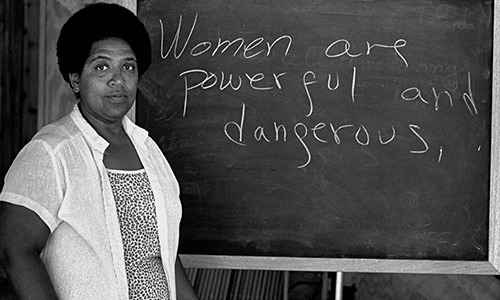
Audre Lorde’s writing and political activism cannot be unravelled. Nor would she want them to be. She famously introduced herself when reading or lecturing with the words at the intersections of her identities, “black, lesbian, mother, warrior, poet.” Her importance as an activist and author has only grown in stature since her death in 1992. In 1984, she accepted a visiting professorship in Berlin and quickly became part of a burgeoning Afro-German movement for civil rights. This book is a collection from an underreported time in her life, comprising previously unpublished lectures and interviews with Lorde’s colleagues. It expands our understanding of Lorde as an important global literary and political figure and reminds us just how compelling she could be.
HISTORY
Tacky’s Revolt: The Story of an Atlantic Slave War | Vincent Brown 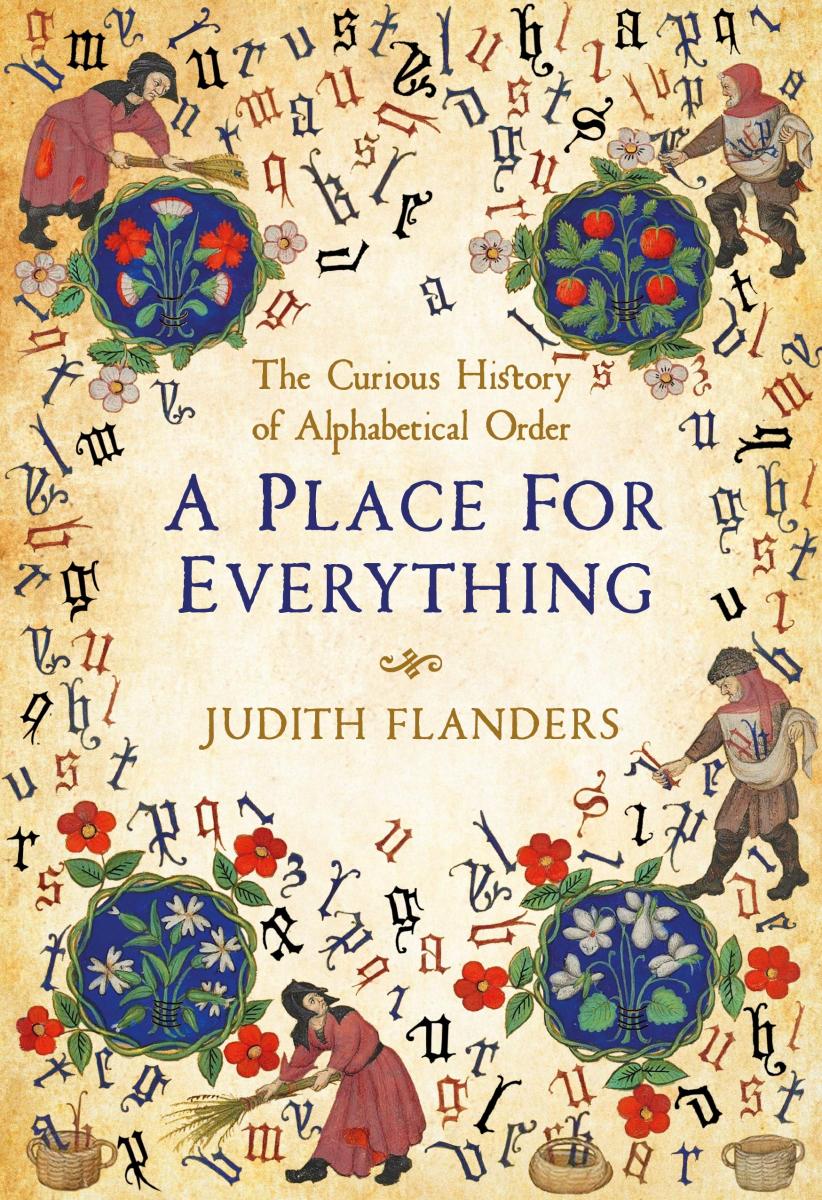
The revolt of the title was the prologue to the largest slave revolt in Great Britain’s Atlantic empire in the 17th-century. Vincent Brown posits that the revolt by these African slaves in Jamaica should be understood as a proper battle in a longer war against colonialism and slavery that eventually was won decades later when the enslaved won their freedom. The Guardian declares, “Dense, closely argued and meticulously researched, this is not popular history, perhaps in either sense of the word. But it is important history. Historians have long recognized the Seven Years War as a global conflict but this book brings the role of Africa – and Africans – fully into the struggle.”
The Rebel Cafe: Sex, Race, and Politics in Cold War America's Nightclub Underground | Stephen Duncan
Stephen R. Duncan (History, CUNY) turns on a spotlight on the dimly-lit New York and San Francisco bars, nightclubs, and coffeehouses of the 1950s and 1960s, showing how these venues offered not only entertainment, but were places where ideas that contributed to a new sociopolitical consciousness were born. By examining iconic locales like the Village Vanguard, the hungry i, the Black Cat Cafe, and the White Horse Tavern, Duncan reveals how a thriving nightlife influenced postwar liberal politics and culture. While the conservative politics of Red Scare-era America was in full swing,, the urban underground of New York and San Francisco acted as a refuge for left-wingers and a laboratory for social and cultural experimentation.
Domina: The Women who Made Imperial Rome | Guy de la Bedoyere
Apart from certain priesthoods, Roman society denied opportunities to women. This book illuminates women of imperial households during the Julio-Claudian period (27 BCE–68 CE) who broke through these barriers and achieved political influence and power. Livia, the wife of the emperor Augustus, Octavia, Nero’s mother Agrippina and his wife Poppaea Sabina, and more are featured.
A Place for Everything: The Curious History of Alphabetical Order | Judith Flanders
As soon as children can talk, we start to teach them the alphabet. You can probably still sing the alphabet song you learned as a toddler. But why does b follow a, and c follow b? Judith Flanders’s A Place for Everything is an investigation of this and the way this ordering affects our lives. Imagine trying to find a book in our stacks if the alphabet wasn’t ordered in a way that everyone knows. Hers is a book of curiosities and serendipities that created something that seems as inevitable as money. The Guardian writes, “One of the many fascinations of Judith Flanders’s book is that it reveals what a weird, unlikely creation the alphabet is. Writing has been invented independently at least three times in different parts of the world. The alphabet was invented only once – over 3,000 years ago, in Egypt’s Western desert.” It's use as an organizing tool, like libraries use, only took hold within the last few hundred years.
An Underground Guide to Sewers, or, Down, Through & Out in Paris, London, New York, &c. | Stephen Halliday
Stephen Halliday’s book is exactly as it sounds - an illustrated tour of sewer systems in major cities. What the title fails to advertise is just how terrific this tour might be. The New York Times raves, “If you think an exploration of excrement disposal doesn’t sound like fun, think again. This highly entertaining, dare we say absorbing, book is “a sort of ‘Around the World in Eighty Toilets’” and The Spectator says, “Halliday’s beautiful book (that’s right — an illustrated guide to the world’s sewage systems can be beautiful) shows us how waste disposal and treatment have got more sophisticated...:” The book is chock full of architectural drawings, maps, and photographs that are linked together by Halliday’s detailed histories of how cities work.
The Decline of Magic: Britain in the Enlightenment | Michael Hunter
One need only look at bestseller lists or top-grossing movies to see that we are still fascinated by magic, though few of us believe it’s true. The relegation of magic to the arts wasn’t always the case. Fifty years ago, the standard for the study of the belief of magic and it’s popular abandonment was published - Keith Thomas’s Religion and the Decline of Magic. This landmark study of anthropology and history (and favorite of Hilary Mantel’s) demonstrated the wide belief in magic among Britons in the 16th and 17th centuries and claimed the rise of scientific thinkers as the cause of its decline. Michael Hunter’s most recent can be seen as a challenge to Thomas’s book. He argues this change occurred not because scientists invalidated it, but because the leading scholars and thinkers stopped paying it credence. The Literary Review states that “the history of such change is difficult to write: it is effectively an attempt to write the history of increasing silence. It is to Hunter’s great credit that he has made such a thought-provoking attempt to do just that.”
Information Hunters: When Librarians, Soldiers, and Spies Banded Together in World War II Europe | Kathy Peiss
Though you’d think that librarians would have little in common with spies, WWII saw an unusual intersection of their worlds. In her book Information Hunters, Kathy Peiss has unearthed the contributions of a select group of librarians who sometimes functioned as spies. “She explains how heroic librarians not only aided the war effort—delivering intelligence about fascist technology, propaganda and infrastructure—but also altered the practice of librarianship, ushering in an era of mass foreign acquisitions and widespread microfilm use, as well as giving urgent focus to the rapid extraction of vital information rather than the simple storage of data. The history of librarianship isn’t as quiet as some of us might believe” says The Wall Street Journal.
The Affirmative Action Puzzle: a Living History from Reconstruction to Today | Melvin Urofsky 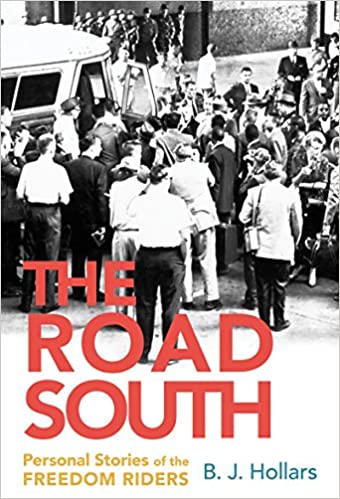
Booklist: “In this scholarly, comprehensive, thoroughly engaging study, Urofsky traces the legal and legislative evolution of affirmative action, from the initiatives offered under the Civil War's Freedmen's Bureau and various New Deal programs. Further on, he examines the executive orders signed by presidents Kennedy and Johnson and ends by scrutinizing our contemporary understanding and adoption of these ground-breaking laws...Urofsky highlights various Supreme Court cases, seminal moments, and historical individuals to convey a broader view... balanced and nuanced…” Kirkus: “A must-read for anyone interested in the history of affirmative action and its associated legal conundrums.”. In the New York Times, Orlando Patterson wrote that “Urofsky deploys his legal expertise to great effect in analyzing the numerous cases that have been argued over the policy...The great merit of this meticulously researched, honestly crafted work is that it allows readers to draw their own conclusions about the value of this uniquely American experiment.”
The Road South: Personal Stories of the Freedom Riders | B.J. Hollars
In May 1961,the Congress of Racial Equality had the idea to send thirteen individuals—seven black, six white—on a harrowing bus trip throughout the South to protest continued illegal racial segregation within the interstate highway system. The Freedom Rides have since becoming legendary as a form of successful grassroots protest. But while much has been written on the Freedom Rides, far less has been published about the individual riders. In this book, B. J. Hollars seeks them out, retracing the historic route and learning the stories of as many surviving riders as he could.
FINE & PERFORMING ARTS
The Ruins Lesson: Meaning and Material in Western Culture | Susan Stewart 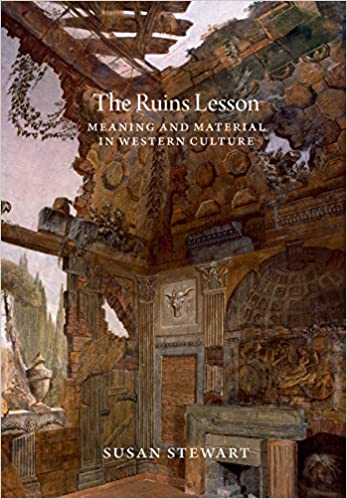
Susan Stewart is a poet and a Princeton professor of the humanities. In this heavily illustrated book published in 2020, she examines our fascination with decayed remains, from Egyptian relics to contemporary monuments of destruction and trauma, particularly the work of Piranesi. The Washington Post calls The Ruins Lesson a “a sweeping cultural history...a scholarly tome…[written with] poetic grace and a nonspecialist’s appreciation of printmaking, painting, literature and architecture. Readers outside the academy will find much to value in this lovely book.”
Unretouched Women | Clara Bourveresse
In the mid-1970s,, three American photographers—Eve Arnold, Abigail Heyman and Susan Meiselas—published groundbreaking books of Feminist-informed photography. Combining testimonies and images, their books were original honest documentaries of women at work, their daily routines and their private lives. This catalogue reveals their unusual approach, taking a close look at Heyman’s Growing Up Female (1974), Eve Arnold’s The Unretouched Woman (1976), and Susan Meiselas’s Carnival Strippers. All three books have cast a profound influence on photography, the photography book, investigative journalism, and more. The book was featured in Bookforum as one of the season’s outstanding art books.
Madame d'Ora | edited by Monika Faber; preface by Ronald S. Lauder
Born Dora Kallmus (1881-1963), the Austrian fashion and portrait photographer who went by the moniker Madame d'Ora was the most acclaimed portraitist of fin de siècle Vienna. After relocating to Paris in the 1920s, she opened a studio where her models included Pablo Picasso, Josephine Baker, and Collette, among many others. After World War II, her work took on a new aspect as she took pictures of the war’s victims in refugee camps. This book accompanies the largest exhibition of her work in the United States, presented at the Neue Galerie in New York.
The Sun and Her Stars: Salka Viertel and Hitler's Exiles in the Golden Age of Hollywood | Donna Rifkind
In 1928, with National Socialism on the rise, Salka Viertel and her husband left Germany for Hollywood. There, she and her husband befriended or worked with F.W. Murnau, Bertolt Brecht, Arnold Schoenberg, Ernst Lubitsch, Sergie Eisenstein, Aldhous Huxley, Christopher Isherwood, and Thomas Mann, helping fellow exiles find jobs and places to stay, and providing financial support. Viertel was best known as a talented screenwriter and worked closely with producer Irving Thalberg and Greta Garbo for several years. Library Journal calls The Sun and her Stars “an overdue appreciation of a neglected figure...a study of a complex, openhearted woman who had a key role in saving the displaced while shaping mid-20th century Hollywood.”
Short Life in a Strange World: Birth to Death in 42 Panels | Toby Ferris
Upon the death of his father, Toby Ferris sets out to make sense of his parents’ lives and his own middle age in an odd way. by searching out the 42 extant paintings of Peter Bruegel the Elder. Best known for scenes of peasant life painted in the 16th century, Bruegel proves a good place to start for Ferris’s charming and illuminating thoughts on our modern ways. Though a sharp observer of modern life, ”Ferris is also good at making us look with a new eye at familiar paintings, and readers can ask for nothing more of an art book” says Honor Clerk in The Spectator.
Voyaging Out: British Women Artists from Suffrage to the Sixties | Carolyn Trant 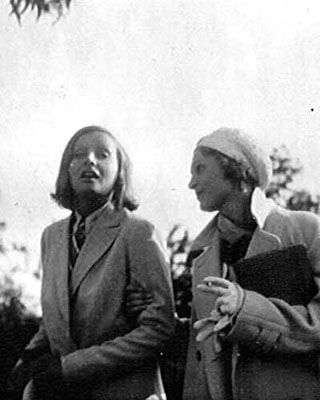
Carolyn Trant examines the history of women artists in modern Britain, attempt to filling in the gaps in traditional art histories. The Guardian calls the book “...detailed and full of surprises: everyone is here, from the still celebrated to the little known and the almost completely forgotten. Trant pays attention not only to these women’s lives and work – carefully balancing the two – but makes room, too, for their weirdnesses and quirks: here are occultists and outsiders, crafters and cross-dressers.” Jo Applin, although critical of some aspects of the book, wrote in the TLS that: “Trant shows us [the artists’] struggle for recognition, and to establish a balance between art and domestic life, as well as the sustaining relationships and friendships forged between women. Voyaging Out offers a powerful and important corrective to historical accounts that continue to draw on the same small pool of participants.”
Rough Ideas: Reflections on Music and More | Stephen Hough
Hough is a prolific and acclaimed classical pianist, recording artist, painter, and writer. Most of the dozens of short pieces collected here are about music, but many other subjects are explored—sexuality, religion, art museums, literature, abortion, and more—”with wit, grace, and a singular point of view” (Library Journal).
Selected Writings | Alexander von Humboldt (selected by Andrea Wulf) 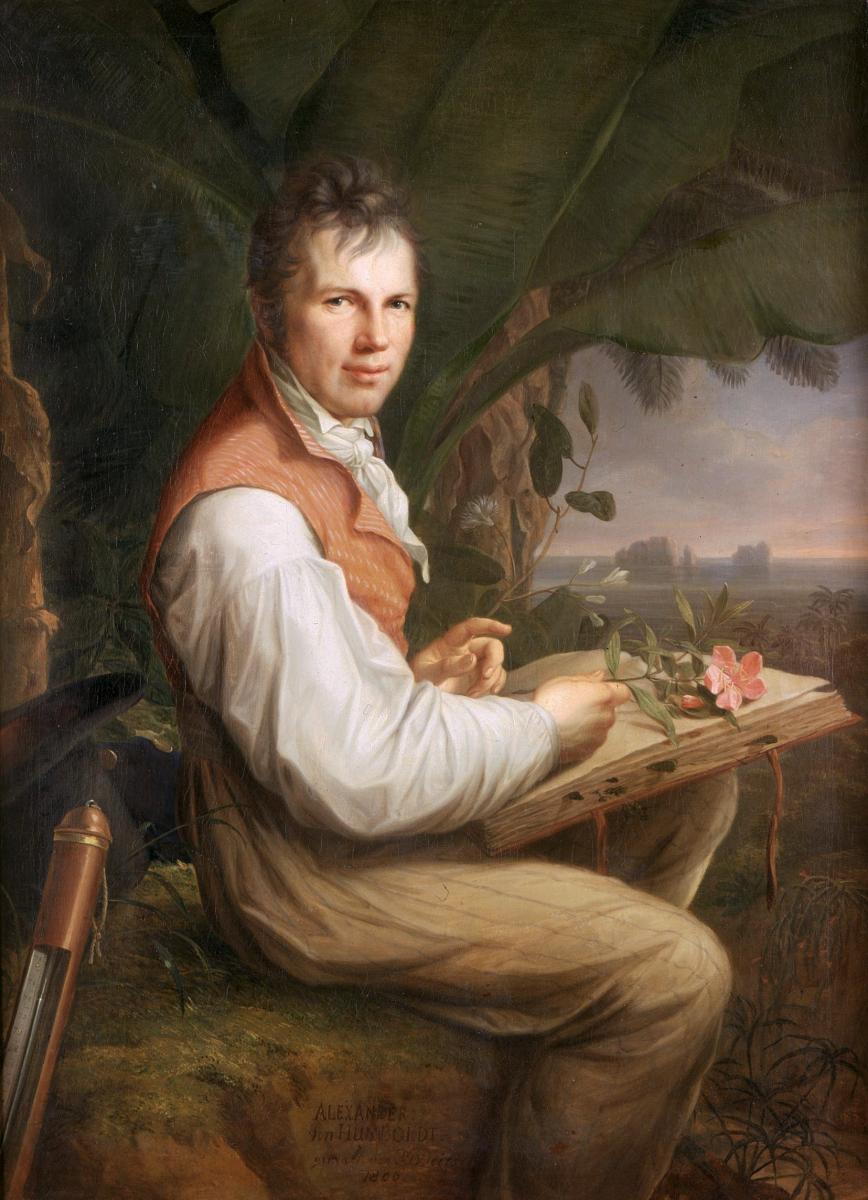
Finally, a good, solid one volume selection (800 pages) of Alexander von Humboldt’s work translated into English. The writings included here were chosen by an authority, Andrea Wulf, whose acclaimed biography of Humboldt, The Invention of Nature (2015), remains very popular at the Society Library. In the 19th century, as a scientist, explorer, and prolific writer, von Humbdoldt was one of the most famous men in the world, counting Emerson, Thoreau, Jefferson, Whitman, Goethe, Darwin and many more among his readers and admirers. In the introduction, Wulf writes that her intention was “to choose sections and passages that illustrate the breadth of Humboldt’s interests, while at the same time focusing on the books which he wrote for the general reader rather than scientific colleagues.” His careful, literary approach to nature writing continues to influence authors today.
The Language of of Butterflies: How Thieves, Hoarders, Scientists and other Obsessives Unlocked the Secrets of the World’s Favorite Insect | Wendy Williams
With “convincing and contagious enthusiasm,” Williams chronicles the history of butterfly science, also providing profiles of the scientists who have studied the “world’s favorite insect” throughout the centuries. The study of butterflies continues to make new discoveries and Williams shows how recent research debunks all kinds of persistent, commonly held theories. Evolution, procreation, migration, conservation, all aspects of butterfly science—and the fascinating hold these creatures have on humans—are covered in accessible prose.
Idea of the Brain: The Past and Future of Neuroscience | Matthew Cobb
Cobb (School of Biological Sciences at the University of Manchester) traces how humans’ understanding of the brain has evolved from antiquity to the present. Going beyond a simple chronology of our ever-increasing knowledge of biology, Cobb shows how our ideas about the brain have been shaped by each era's most significant technologies. He also delves into how scientists, faced with describing this vastly complex thing, resort to different kinds of metaphor (maps, machines, robots, telephones, computers, the Internet, etc.) that can present limitations and problems, or new inspiration, and that in turn influence our understanding of the brain. Stephen Casper, in Nature, writes that “for the popular audience he targets, Cobb’s account is an important contribution: few have offered such accessible insights, with choice examples and clear explanations.” In the Wall Street Journal, Carol Tavris predicted that readers “will come away from this illuminating history of thinking about the brain with a renewed appreciation of the task that remains.”
Transcendence: How Human Evolved through Fire Language Beauty and Time | Gaia Vince
Kirkus describes Transcendence as a “captivating story of evolution from the Big Bang to the present Anthropocene, where the former Nature and New Scientist editor traces four key elements—fire, language, beauty, and time—that have allowed humans to grow from ’an endangered puny primate on the savannahs of Africa to become the most numerous big animal on Earth.’" Reviewers from a variety of publications have praised how Gaia Vince incorporates information from a wide range of research as evidence to support her thesis.
TRAVEL & EXPLORATION
Stories of the Sahara | Sanmao 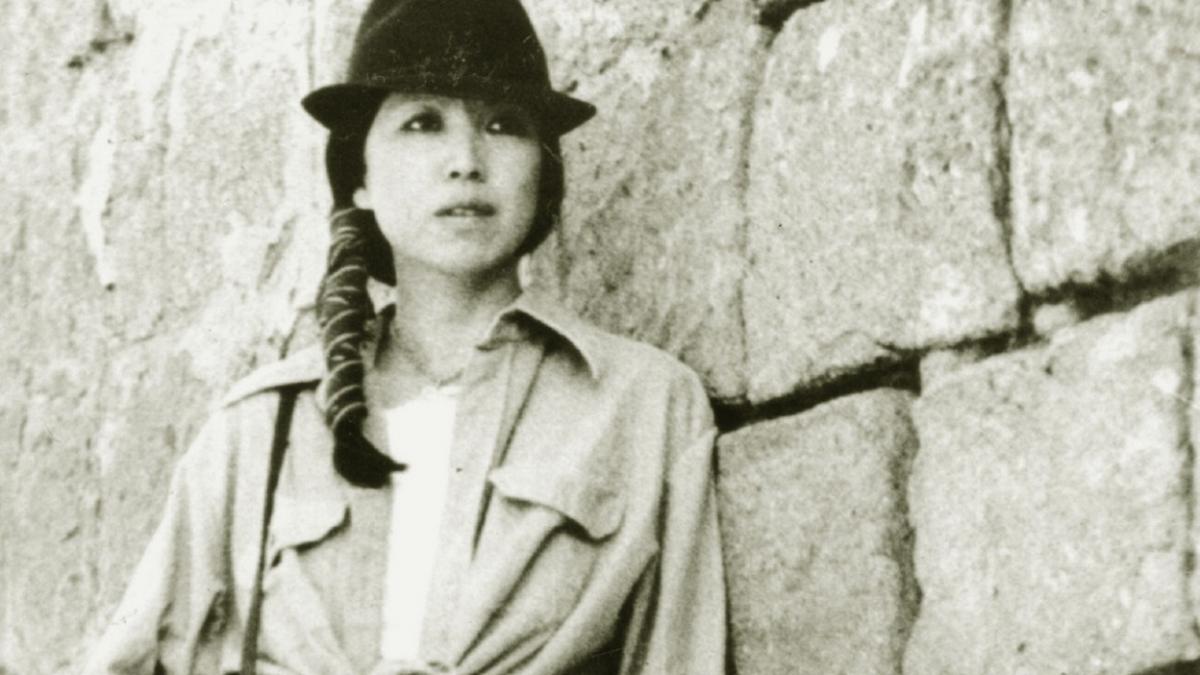
The Sahara Desert would not be considered an odd choice for a collection of travel essays. The author would need to be intrepid, but travel writers are a hearty bunch. Still, these essays by Sanmao are unique. Born Chen Mao Ping in China, the young woman who would achieve fame as Sanmao satisfied her wanderlust early, decamping for Germany and Spain to follow up her college education in Taiwan. In the early 1970s, she moved to El Aaiún, the capital of what was then the Spanish Sahara, and began publishing dispatches of life among the Sahwari, a nomadic people seeking independence from the Spanish colonizers who claimed the area. These dispatches were collected and released as Stories of the Sahara, published in Taiwan in 1976. The book was an immediate sensation and remains so today, selling more than ten million copies in China and Taiwan. This is the first time these essays appear in English.
Infinite Cities: A Trilogy of Atlases: San Francisco, New Orleans, New York
Reinventing the standard atlas, Rebecca Solnit, Rebecca Snedeker, and Joshua Jelly-Schapiro attempt to explore the hidden histories of three great American cities in a unique, compelling set, beautifully designed. The editors cast a wide net, enlisting many contributors across several diverse fields of study for each atlas, providing a complex rendering of the multi-faceted natures of each city. The New York atlas contains 26 different maps across all five boroughs, celebrating Gotham’s unique contributions to the arts and literature, but also critiquing the city’s racial and economic inequality, environmental impact, and erasure of its past.
Travels with a Writing Brush: Classical Japanese Travel Writing from the Manyōshū to Bashō | Meredith McKinney, ed. and translator 
Spanning the 8th - 17th centuries, “this delightful anthology traces the evolution of travel writing in Japan through diaries, stories, drama and poetry. McKinney reveals how a distinctive poetics of travel emerged very different from that of the west...a remarkable work of translation and scholarship, filled with wonderful vignettes of Japanese life and sensibility, McKinney introduces readers to the nation’s rich and unique literary tradition” (The Guardian).
Land of Tears: the Exploration and Exploitation of Equatorial Africa | Robert Harms
Harms (Professor of History and African Studies, Yale) examines the European pillage of the human and natural resources of the Congo rainforest at the end of the 19th and beginning of the 20th century, and how it catastrophically affected social and political institutions on the African continent. Although the subject has been covered in many previous well-regarded books, reviews have consistently noted that Harms presents materials and analysis that will be new to most readers. Lots of critical praise for this one: “Essential reading for serious students of modern African history” (Library Journal); “Meticulously researched and written in a thoroughly engaging style, this exhaustive chronicle offers essential insights into the history of imperialism” (Publisher’s Weekly); “An exemplary work” (Kirkus); “Harms’s lucid overview is an excellent introduction to the colonization of Central Africa to those unfamiliar with the subject” (H-Net); “Harms’s deeply rewarding account of this history breaks new ground by broadening the context” (Foreign Affairs).
